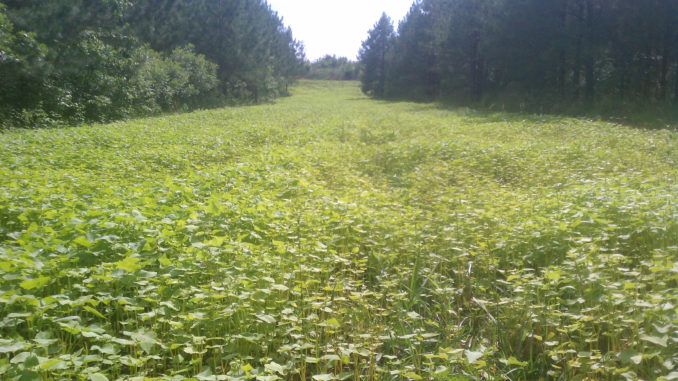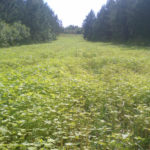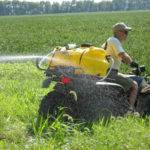
Seeds developed in lab are far superior
Dating back to the pre-settlement era, man continues to select preferred traits of flora and fauna to gain a desired outcome. While somewhat-based on survival of the fittest and natural selection, man learned how to cross-breed and produce unique crops, resulting in a preferred product for the consumers of the civilized world. But wildlife managers have significant options with several prime seeds with superior nutritious value and convenience factors built right into the seed, with overwhelming benefits to the landowner and wildlife.
Very few planted crops, if any, express their pre-settlement heritage. Today’s plants are not the same plants produced by the settlers in colonial times. But with today’s exotic pests in a variety of different forms, heirloom varieties would be outcompeted and would eventually disappear. Today’s crops have more battles to fight with plant diseases, critter depredation and severe competition among other growth. Decades of research, thousands of hours in the laboratory and numerous clinical trials on test farms have produced some of the best available seed on the market today. New seeds are resistant to disease and offer benefits to farmers and the wildlife manager trying to produce a lush and bountiful food plot.
Wildlife managers and farmers benefit tremendously from the new, genetically-engineered seed available. Basically, food-plot seeds’ two major enemies are premature predation — or heavy foraging while developing — and competition from invading weeds. While heavy foraging must be controlled by other means, new varieties have been hybridized to outcompete many invading weeds. Deterring weed competition is most important during initial emergence and the first four to six weeks of growth. Freshly plowed dirt triggers early succession in plants. Weeds will invade any open spaces and grow much faster than most food-plot seed available. While several herbicides, such as Monsanto’s Roundup (or glyphosate) have been available to control weeds, they will kill also the planted crop. Glyphosate is a systematic, broad-spectrum herbicide that kills just about everything through leaf or any living orifice on the plant. However, Monsanto genetically-engineered new seeds in their Wisconsin laboratory that are resistant to glyphosate and are excellent for producing food plots with little to no weed competition. There again, hybridization and genetic engineering has given plot managers a leg up on the usual food plot killers. Currently, growers can get “Round Up Ready” corn, soybeans, and alfalfa.
Monsanto’s Roundup Ready seeds have revolutionized true weed-free food plots, but genetic engineering and hybridization has moved beyond weed-free plots. Scientists have developed new seeds, selecting for maximum biomass yields perfect for cattle producers and trophy deer managed tracts. Soybeans have always been favored by deer. While deer love the sweet taste of soybeans in fall, the tender foliage is very nutritious and highly palatable, too. In fact, the Eagle soybean line (available at http://dbwoutdoors.com/) is known to produce whopper crops of soybeans, with plants towering up to seven feet in height, with foliage protein content itself at 35 percent. The extremely large leaves and bumper seed-pod production will produce tremendous biomass. This variety will provide deer with a highly nutritious food source between spring through early winter. Additionally, the entire line of Eagle soybeans is also Roundup Ready as well providing a weed-free crop.
Selecting plot seed for site
Throughout the year, wildlife managers sift through their available food-plot sites and figure out what they need to plant in each of their fields. Unfortunately, there is never single seed that can be planted throughout every condition. While some plants will be tolerant of varied moisture levels, food-plot seed should be carefully selected to its preferred moisture and soil type. Hybridization and genetic engineering has produced seeds to withstand excessively dry sites.
Hopefully, wildlife managers have their food plots on sites that are neither excessively dry nor excessively wet. While some plants will grow on these sites at each end of the spectrum, moderately dry or wet will produce better results. Either way, wildlife managers should still choose the correct seed mixes that are engineered for their specific place on the moisture scale. For instance, drought-tolerant seed should be planted on the sandy and well drained sites. The Eagle soybean line mentioned in the earlier section, is very drought-tolerant and can withstand drought conditions after becoming established.
Lablab is a legume with multiple wildlife benefits that is very drought-resistant, and it is quite versatile, with having the ability to withstand drought and waterlogged conditions. While Lablab can be planted alone, it cannot withstand heavy grazing pressure and should be planted within a seed mix. Lablab will climb and is good to plant with larger plants such as sorghum and corn, which both also prefer dry, well drained sites.
Tecomate Seed’s Barduro Red clover is another good seed that withstands dry conditions with a high protein yield for deer in warm- and cool-season plots in the South. In several field laboratory tests, this variety of red clover has been documented to withstand long periods of drought.
Rotate Roundup Ready crop sites
Roundup Ready corn, soybeans and alfalfa produce some truly amazing yields for deer and other wildlife to enjoy. Unfortunately, weeds are very adaptable, finding ways to survive a routine dousing of glyphosate.
Several weed species, including pigweed, horseweed and giant ragweed are becoming resistant to Roundup’s toxicity in certain areas of the country. While wildlife managers should not have too many issues with resistant strains of these weeds, many food plots are near or are former agriculture fields. Over 80 percent of all commercial corn, cotton, and soybean fields are the Roundup Ready variety, and more and more resistant weeds are evolving. In an effort to discourage resistant weeds from flourishing, wildlife managers should considered rotating Roundup Ready varieties on their food plots.






Be the first to comment